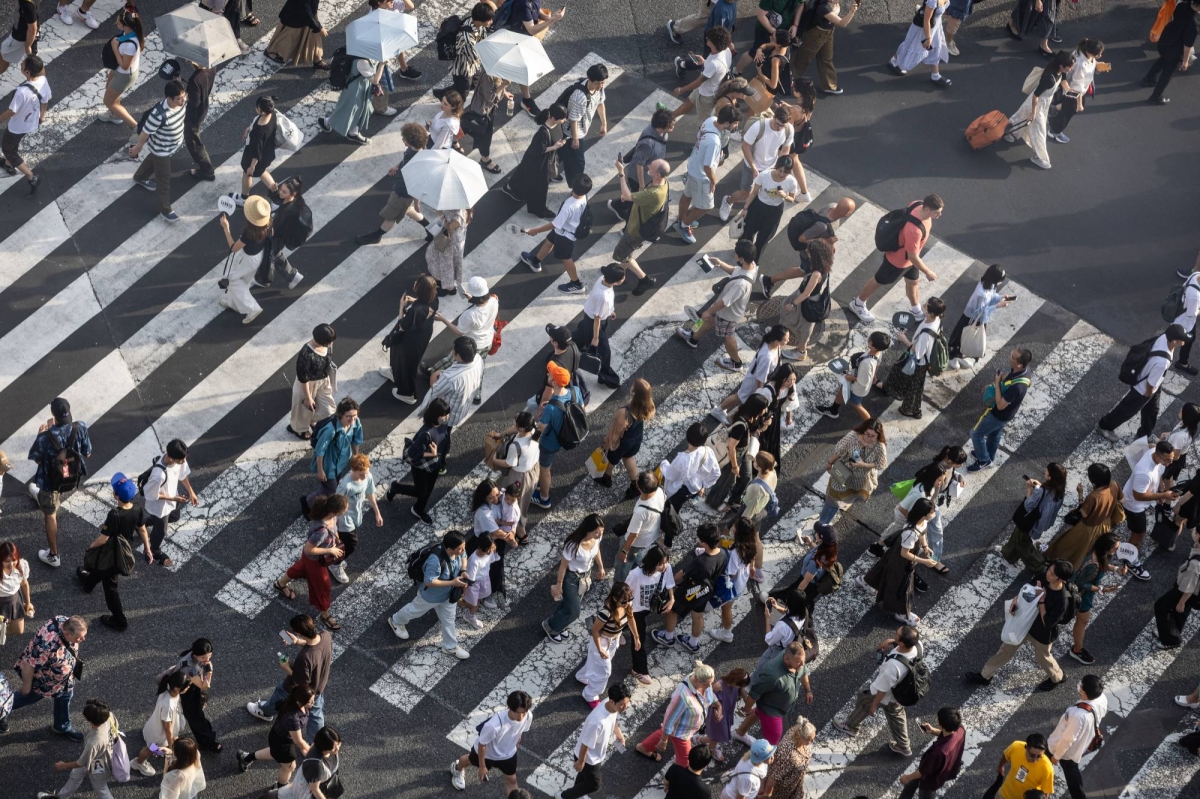- Japanetic
- Posts
- Japanese denim and the story of the Osaka 5
Japanese denim and the story of the Osaka 5
Why is Japanese denim so renowned? Let's look at the history of indigo clothing and why Osaka is a hot spot.
You don’t forget a pair of Japanese jeans.
I grew up in the countryside in France so stores were severely limited. My parents were buying cheap jeans with a very rough uncomfortable fabric.
I disliked jeans.
Then I tried a pair of Levi’s and I saw the light.
The weight of the fabric, the vibrant indigo color, and the feeling on the skin. These are sensations I can’t forget.
That’s exactly how I felt, once again, when I tried a pair of Japanese jeans.
There were as far apart from Levi’s as Levi’s was compared to cheap jeans.
Why is that?
To answer this question, we need to look at the history of indigo in Japan.
What is the indigo dye made from?
Japanese indigo dyeing, or aizome, involves a unique fermentation process: Indigo leaves are harvested and fermented for about four months to create “sukumo”. The sukumo is mixed with lye, lime, and other ingredients to create a dye solution.
Although nowadays, synthetic dyes have largely replaced traditional methods.

There are still people carrying over the traditional aizome process.
Evolution of indigo clothing in Japan
Initially, indigo-dyed garments were reserved for the nobility and imperial court during the Heian period (794-1185).
But it wasn’t just for looks. Samurai used indigo-dyed fabrics under their armor to help keep bacteria from wounds.
Pro tip: That’s why you don’t have to wash denim all the time. It keeps bacteria, and therefore odors, away.
The use of indigo expanded significantly during the Edo period (1603-1867). It was used for everyday items like kimonos, bedspreads, and firefighters' clothing
It was due to an increased cultivation of cotton which led to indigo dyeing becoming more widespread among farmers and the working class.
During that period, Japan had become one of the world's leading indigo producers, with over 1,800 indigo farms.
That’s why the indigo blue is sometimes referred to as “Japan blue”.

Typical “Japan blue”
Why is Japan so renowned for high-quality denim?
Because of its love for indigo, Japan was primed to adopt jeans when the US started to occupy the country after WWII.
But it’s also Japan’s obsession for perfection that brings a lot to denim. Japanese denim is known for its high-quality stitching and finishing processes.
That’s where the Osaka 5 enters the scene.
The story of the Osaka 5
If Japan is known for its denim, it has a lot to do with 5 denim companies from Osaka.
These companies were instrumental in reviving and perfecting vintage denim styles starting in the 80s, when mass produced jeans were all you could find.
They were using vintage shuttle looms, which were phased out in the U.S. in the 1960s.
These looms have the benefit of making denser, more durable denim. But they have several drawbacks that are making them impossible to use for the increased demand for jeans.
Osaka 5 is composed of:
Studio D'Artisan (1979) is the pioneer and started by using pure indigo selvedge denim and carefully-sourced parts, a very rare thing at the time.
Denime (1988) became famous by making the most conventional interpretation of the vintage American jean with wider distribution than Studio D’Artisan.
Evisu (1991) was more adventurous than Denime and became famous for its distinctive designs and cultural significance.
Fullcount (1992) is famous because it was one of the first to use soft, long-fiber Zimbabwe cotton over other varieties.
Warehouse & Co. (1995) is the youngest of the Osaka 5 and were also focusing on faithfully producing vintage mid-century jeans, with an amazing attention to detail.

A pair of Evisu jeans
Why Osaka though?
Everyone has a different story on that. Some say it’s because Okayama is close and is the epicenter of denim production. Others say that Osaka was big on vintage shops and Americana.
Osaka is historically a city of merchants. It’s more relaxed and adventurous than Tokyo. It’s still true to this day. And that may also explain why Osaka became a denim hub.

A beautiful view of Osaka’s castle
Map of the Osaka 5
I’ve been working on a full website for Japanetic and it’s now online.
It’s a directory of shops related to Japanese craftsmanship. Right now, there are only a few places, but I’m expanding it every week.

Map of Osaka
That’s where you’ll find the locations of the Osaka 5 (minus Denime which was sold).
But these brands have stores in Tokyo too.
Shops in Osaka
Shops in Tokyo
You can also find more great brands on the denim page.
Going further
How the Osaka Five Pioneered Japanese and Heritage Denim — You’ll find a lot more details about the Osaka 5 in this article.


